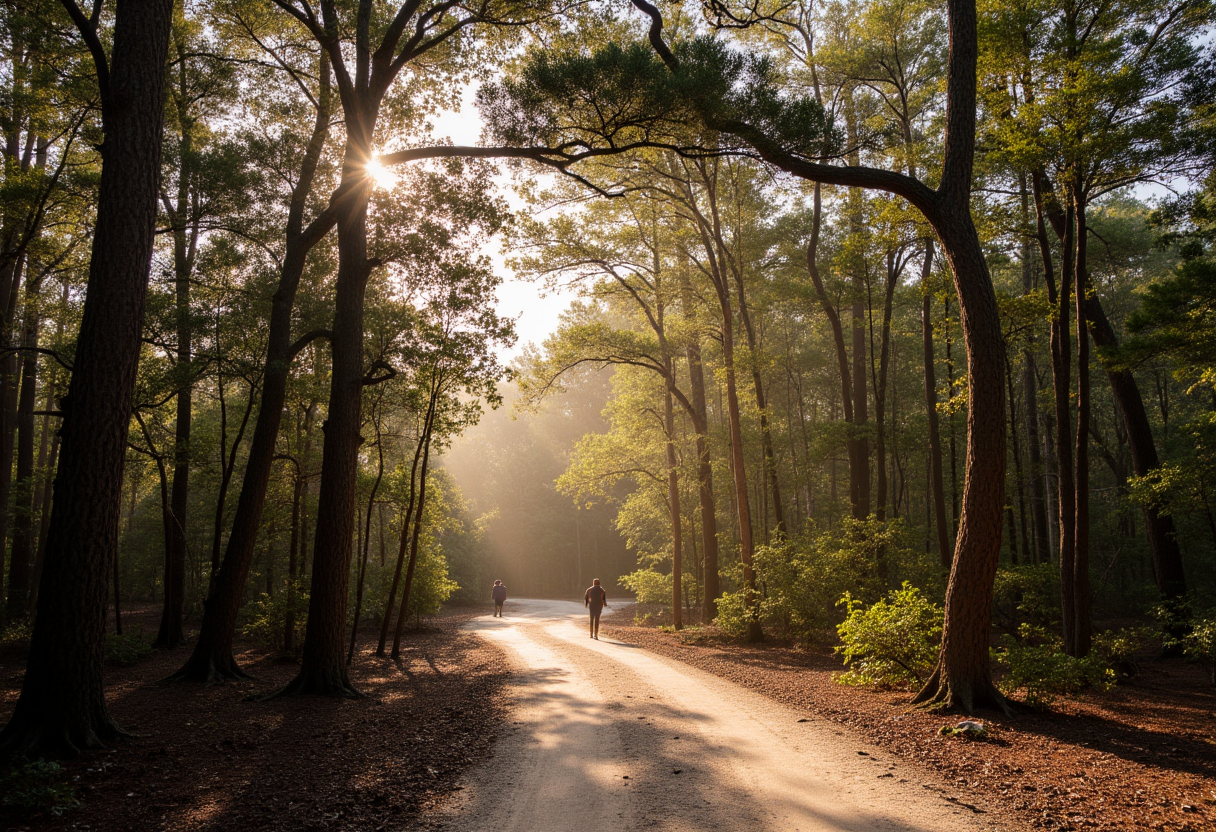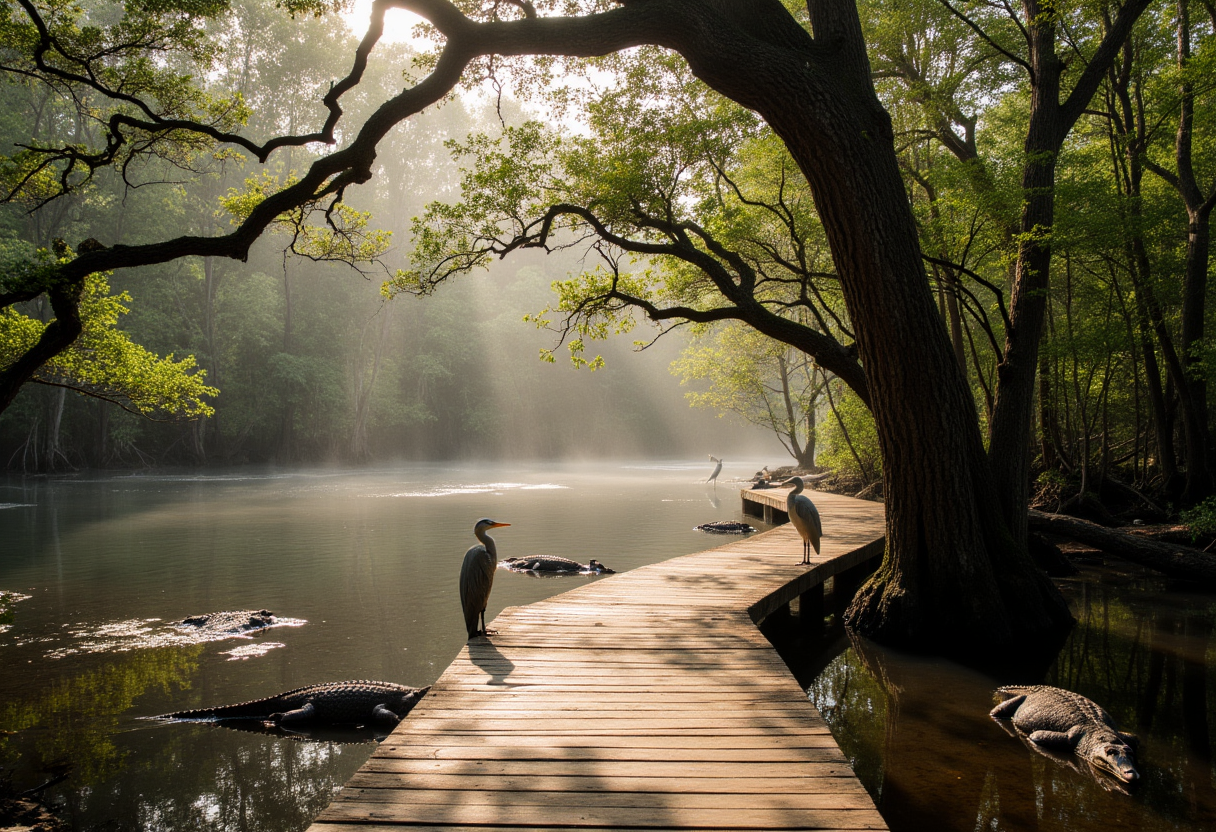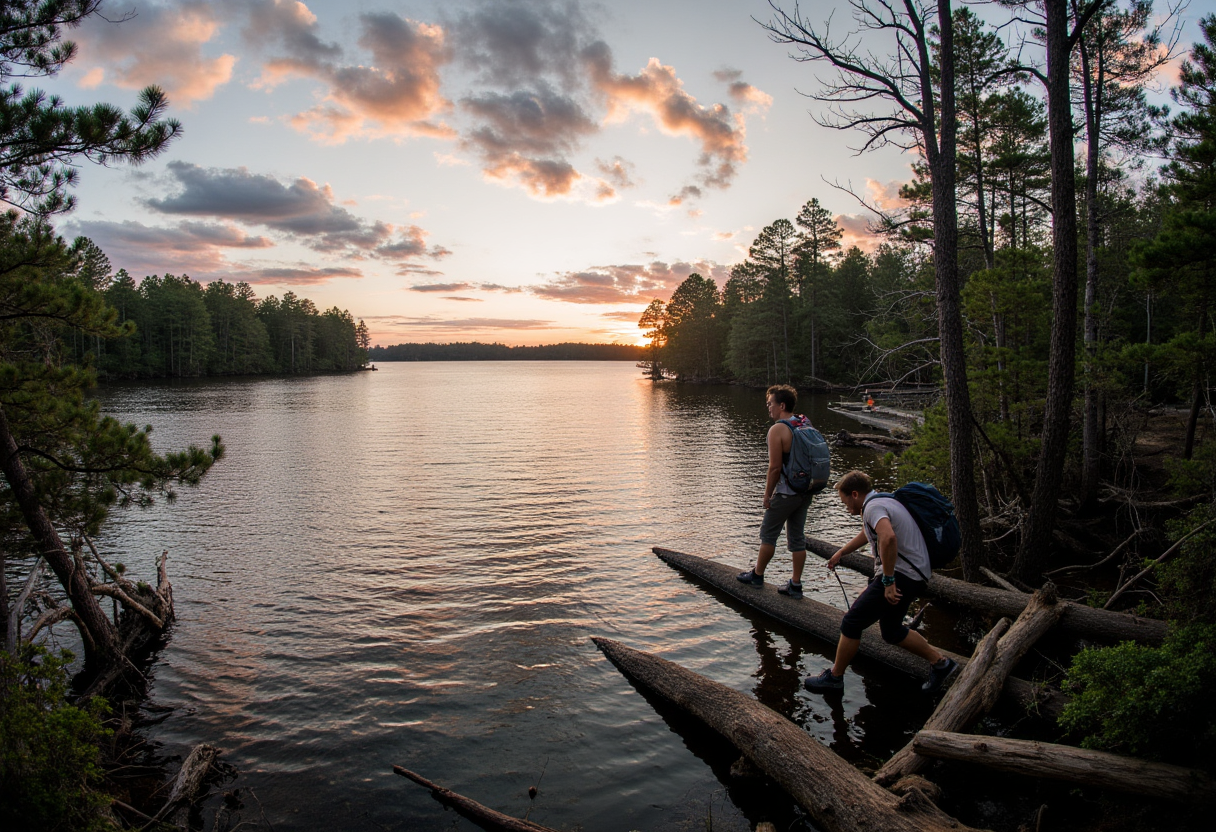Trails for Hiking: Exploring Florida’s Natural Wonders
Florida is often celebrated for its sun-soaked beaches, bustling cities, and theme parks, but beyond the tourist hotspots lies a hidden world of natural beauty waiting to be explored. From ancient hardwood forests to subtropical wetlands, Florida offers a wide range of hiking trails that appeal to beginners, families, and seasoned adventurers alike. Whether you’re seeking scenic river views, wildlife encounters, or a quiet retreat in nature, Florida’s trails provide an unforgettable outdoor experience.
image of the Florida Trail
Popular Hiking Trails in Florida
The Florida Trail
Stretching over 1,000 miles from the Panhandle to the southern tip of the state, the Florida Trail is the crown jewel of long-distance hiking in the Sunshine State. Managed by the Florida Trail Association, this extensive trail system traverses forests, wetlands, and coastal landscapes, showcasing the diversity of Florida’s ecosystems.
Hikers on the Florida Trail can witness everything from towering cypress trees and meandering rivers to rare wildlife such as black bears, gopher tortoises, and migratory birds. The trail is divided into sections, making it accessible for day hikes, weekend trips, or multi-week backpacking adventures. Along the way, hikers can also explore historic sites, old homesteads, and quiet natural preserves that reflect the state’s rich history and biodiversity.
Big Cypress National Preserve
For those seeking a more immersive experience in subtropical wilderness, the Big Cypress National Preserve is a must-visit destination. Its loop trails wind through dense cypress swamps, hardwood hammocks, and sawgrass prairies, offering a chance to see some of Florida’s most iconic wildlife.
Big Cypress is home to the elusive Florida panther, bobcats, and a variety of wading birds, making it an excellent spot for wildlife photography and observation. Boardwalks and elevated trails allow hikers to navigate the wetlands safely, while interpretive signage provides educational insights into the preserve’s ecosystems. The combination of natural beauty and wildlife presence makes Big Cypress a serene escape from urban life.
San Felasco Hammock Preserve State Park
Located near Gainesville, the San Felasco Hammock Preserve State Park offers hikers a blend of natural beauty and historical significance. Trails meander through lush hardwood forests, ancient oak trees, and shaded hammocks, creating a peaceful environment for walking, jogging, or birdwatching.
In addition to its ecological value, the park is rich in history, with remnants of early settlements and Native American occupation. Interpretive trails allow visitors to explore these historical aspects while connecting with Florida’s flora and fauna. The park’s well-maintained trails, including loop options suitable for different skill levels, make it an ideal destination for both casual hikers and nature enthusiasts.
Myakka River State Park
One of Florida’s oldest and most scenic parks, Myakka River State Park in Sarasota offers a diverse landscape of wetlands, prairies, and hardwood forests. Hiking here provides opportunities to encounter wildlife such as alligators, wading birds, and even manatees along the river.
The park features multiple trails of varying lengths, and hikers can climb the observation tower for panoramic views of the surrounding landscape. From tranquil riverbank walks to more adventurous backcountry routes, Myakka River State Park combines scenic beauty with accessibility, making it a favorite among locals and tourists alike.
San Felasco Hammock Trail
Torreya State Park
Located along the scenic Apalachicola River, Torreya State Park is a hidden gem for hikers seeking rugged terrain and breathtaking vistas. Its trails navigate steep bluffs, dense forests, and unique geological formations, offering challenging routes for more experienced hikers.
Torreya State Park is also home to rare plant species, including the endangered Torreya tree, giving botanists and nature enthusiasts an opportunity to witness Florida’s biodiversity up close. The combination of physical challenge and natural beauty makes Torreya a rewarding destination for those looking to explore Florida’s less-traveled paths.
Safety and Preparation for Hikers
Hiking in Florida offers unparalleled natural beauty, but it also presents unique challenges. Proper preparation ensures a safe and enjoyable experience while minimizing risks.
Plan Ahead
Before heading out, check the weather forecast, trail conditions, and park alerts. Florida’s climate can be unpredictable, with sudden rainstorms and high humidity. Inform a friend or family member about your hiking plans, including expected return times, especially if venturing into remote or backcountry areas.
Explore Florida’s Trails
Hydration and Nutrition
Florida’s warm climate can quickly lead to dehydration, even on shorter hikes. Carry plenty of water, ideally in a hydration pack for hands-free access, and bring snacks to maintain energy levels. Recognizing early signs of dehydration — such as dizziness, headache, or fatigue — is crucial for safety.
Wildlife Awareness
Florida is home to a diverse range of wildlife, from birds and turtles to snakes and alligators. While encounters can be exciting, it’s important to maintain a safe distance and never feed wild animals. Learn how to respond safely if you encounter snakes, panthers, or alligators, and always remain alert while walking near water or dense vegetation.
Gear and Clothing
Proper gear can make a hike safer and more comfortable. Wear lightweight, moisture-wicking clothing, sturdy hiking shoes, and sun protection such as hats and sunscreen. Insect repellent is also recommended, particularly in swampy or forested areas where mosquitoes are prevalent.
Environmental Responsibility
Hiking responsibly protects Florida’s delicate ecosystems. Stick to marked trails, avoid disturbing wildlife, and carry out all trash. Small efforts, like leaving no trace, help ensure that trails remain pristine for future visitors. Participating in trail cleanups or volunteering with local conservation groups can further enhance your positive impact on Florida’s natural spaces.
Guided Hikes
For those unfamiliar with the area or looking to learn more about Florida’s ecosystems, guided hikes are an excellent option. Local guides provide insights into the flora, fauna, and history of the trails while also offering expertise in safety and first aid. Whether you are a beginner or a seasoned hiker, a guided experience can enrich your adventure.
sunset over Florida hiking trail
Q&A: Hiking in Florida
Q: When is the best time to hike in Florida?
A: The cooler months from October to April are ideal for hiking. Temperatures are more comfortable, humidity is lower, and the risk of afternoon thunderstorms is reduced. Early morning hikes are also recommended to avoid heat and insect activity.
Q: Are Florida trails suitable for beginners?
A: Yes! Many trails, such as sections of the Florida Trail or San Felasco Hammock Preserve, have easy, well-marked paths suitable for beginners and families. More challenging trails, like those in Torreya State Park, are recommended for experienced hikers.
Q: How do I handle wildlife encounters safely?
A: Maintain a safe distance, avoid sudden movements, and never feed animals. For snakes, back away slowly. For alligators, give them a wide berth and avoid walking near water edges. Knowledge and respect are key to safe encounters.
Q: Are dogs allowed on Florida trails?
A: Many state parks allow dogs on leashes. Always check park regulations, bring waste bags, and ensure your dog is comfortable with outdoor conditions and wildlife encounters.
Q: What should I bring on a Florida hike?
A: Essentials include:
Water and snacks
Proper footwear and clothing
Sun protection (hat, sunscreen)
Insect repellent
Trail map or GPS
First aid kit
Q: Can I hike year-round in Florida?
A: Yes, but summer months (June–September) bring high heat, humidity, and frequent thunderstorms. Plan hikes early in the day and carry extra water to stay safe.
Conclusion
Florida’s hiking trails offer an extraordinary opportunity to experience the state’s rich natural landscapes, from subtropical swamps and hardwood forests to riverside vistas and rugged bluffs. With proper preparation, respect for wildlife, and responsible hiking practices, visitors can enjoy safe, memorable adventures while helping preserve these precious ecosystems.
Whether you are a casual walker, a wildlife enthusiast, or a serious backpacker, Florida’s trails provide endless opportunities to explore, connect with nature, and witness the unique beauty that makes the Sunshine State truly one-of-a-kind.
Further Reading:
Earl Lee
Florida Unwritten



